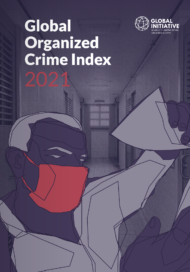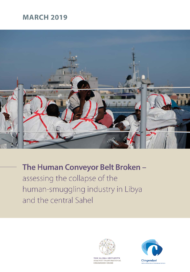Posted on 06 Sep 2013
China’s police struck the traffickers in early September. In a series of coordinated raids across eleven provinces, the police rescued 92 children and arrested 301 human trafficking suspects. While the scope of the operation was impressive, it was hardly unprecedented. Given China’s immense population size, even a small increase in demand for illicit commodities – drugs, people, and animal parts – can have a disproportionate impact on global trafficking trends. Just as China’s economy and economic actors are remolding the global economy, China’s illicit economy and organized crime groups have a profound impact on the global illicit economy. Here we highlight two markets in particular: drugs and human trafficking.
While China has a long history of drug trafficking and consumption, the current drug market has grown exponentially since the trade liberalization of the early 1980s made it easier to smuggle products like heroin, opium, cocaine and marijuana in the country, while economic growth created a middle class with the ancillary income to spend on illicit drugs. From 70,000 registered drug users in 1990, by 2011 the number had ballooned to 1.8 million registered drug users in the “young user” category alone. It is estimated that the number of unofficial users may exceed 12 – 15 million. While the absolute number of addicts is large by international standards, as a percentage of the total population it is still fairly low. This low prevalence rate, coupled with growing incomes among young adults, suggest that the growth in China’s drug market is nowhere near plateauing.
Though meth is increasingly popular in China, heroin and opium are still the most commonly used drugs. Currently China is the third largest market for heroin, trailing only the European Union and Russia. The growth in the market has already had a noticeable impact on drug production and trafficking. China’s market has reinvigorated the formerly moribund opiate industry in South East Asia, as well as prompting the development of a thriving methamphetamine sector in the region. Opiates from Afghanistan have increasingly been diverted to the Chinese market, spiking drug trafficking in the western province of Xinjiang. Finally, China’s small but growing market for cocaine has led to an increase in cocaine trafficking from South America. While most trafficking attempts involve low-level couriers, police in Hong Kong have made several seizures of over 100 kilos. As China’s market for drugs continues to grow, it will likely have a destabilizing effect on regional countries that are current producers of drugs, or who lay astride current or prospective trafficking corridors.
Human Trafficking has also emerged as a large illicit industry in China. Trafficking in China takes several distinct forms. First, there is a booming market in trafficking Chinese nationals into foreign countries, especially Europe and the United States. While some of the migrants are voluntarily trafficked, there is also a sizeable amount of violence as well sex trafficking that occurs. Second, there is a large internal market in China for trafficked persons. This includes labor exploitation, sex trafficking, and the trafficking and resale of children, often to couples who desire a son. Finally, China is a significant destination country for trafficked persons. Many are women who have been enticed or kidnapped from regional countries and brought to China to either be sold as wives or forced into prostitution. It is likely that this last market will increase in the coming decades, as China’s deepening gender imbalance drives a demand for women.
The big winners from China’s expanding illicit economy have been the notoriously vicious mainland organized crime groups. As highlighted by a recent RUSI report, these groups have been transformed over the last 30 years from local criminal groups to highly capable, and bold organizations. They have also extended regionally and transnationally. At a regional level, Chinese criminal groups have been identified in Australia, the South Pacific, and South Korea. Internationally, they have begun infiltrating mainland Chinese diaspora groups in Europe and the U.S. As China’s wealth and diaspora increases, so will the opportunity for the mainland crime groups to both grow in power and spread in scope.



